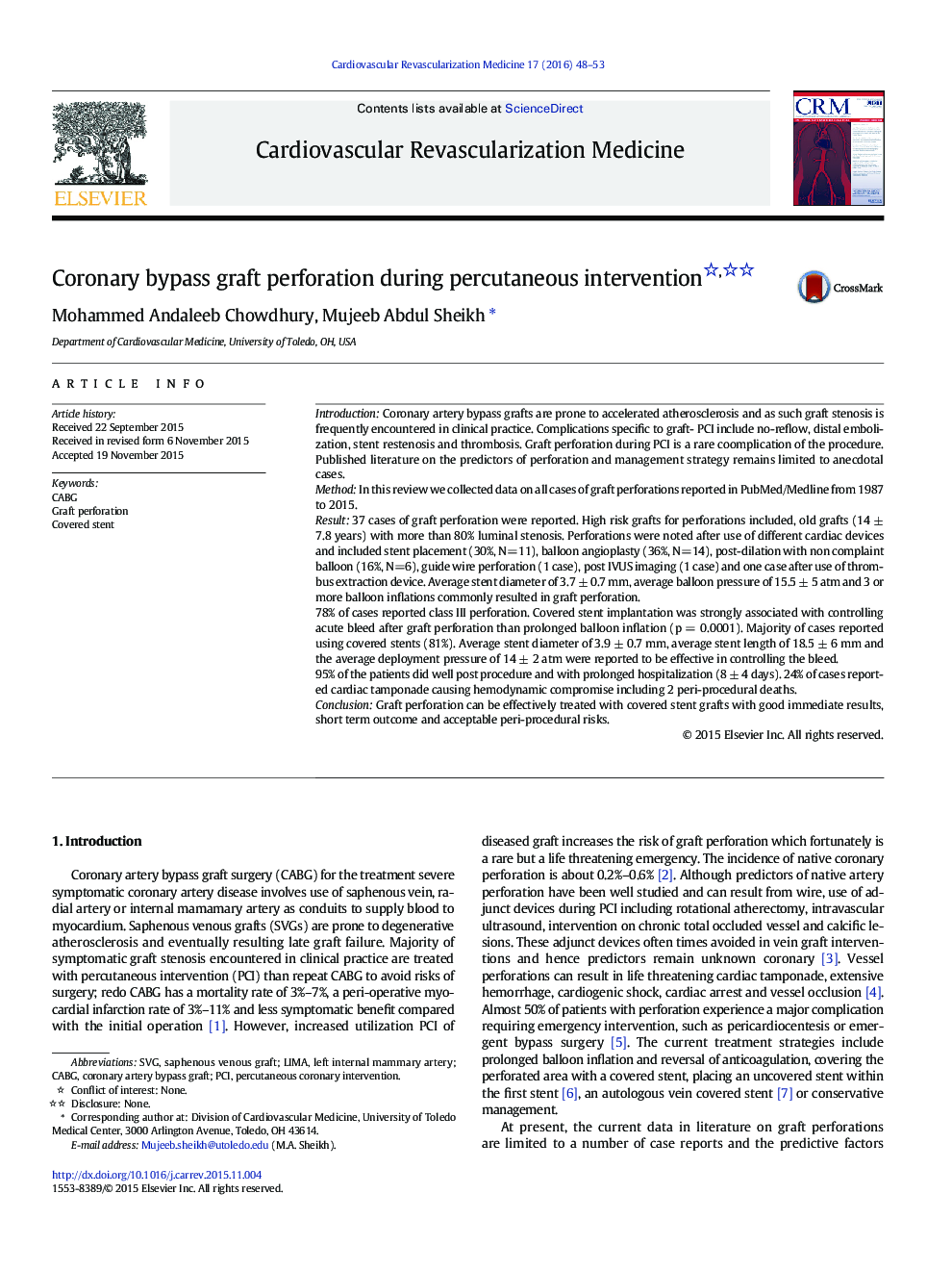| کد مقاله | کد نشریه | سال انتشار | مقاله انگلیسی | نسخه تمام متن |
|---|---|---|---|---|
| 2836890 | 1164864 | 2016 | 6 صفحه PDF | دانلود رایگان |
• Graft perforation is a rare life threatening complication of percutaneous intervention of graft stenosis, however, currently literature on this subject is limited and no definitive guidelines state the optimum management strategy in such circumstances.
• We reviewed all cases reporting graft perforation from 1987 to 2013 and collected data to identify high risk lesions, procedures that will increase the likelihood of perforations and the feasible management strategies.
SummaryIntroductionCoronary artery bypass grafts are prone to accelerated atherosclerosis and as such graft stenosis is frequently encountered in clinical practice. Complications specific to graft- PCI include no-reflow, distal embolization, stent restenosis and thrombosis. Graft perforation during PCI is a rare coomplication of the procedure. Published literature on the predictors of perforation and management strategy remains limited to anecdotal cases.MethodIn this review we collected data on all cases of graft perforations reported in PubMed/Medline from 1987 to 2015.Result37 cases of graft perforation were reported. High risk grafts for perforations included, old grafts (14 ± 7.8 years) with more than 80% luminal stenosis. Perforations were noted after use of different cardiac devices and included stent placement (30%, N=11), balloon angioplasty (36%, N=14), post-dilation with non complaint balloon (16%, N=6), guide wire perforation (1 case), post IVUS imaging (1 case) and one case after use of thrombus extraction device. Average stent diameter of 3.7 ± 0.7 mm, average balloon pressure of 15.5 ± 5 atm and 3 or more balloon inflations commonly resulted in graft perforation.78% of cases reported class III perforation. Covered stent implantation was strongly associated with controlling acute bleed after graft perforation than prolonged balloon inflation (p = 0.0001). Majority of cases reported using covered stents (81%). Average stent diameter of 3.9 ± 0.7 mm, average stent length of 18.5 ± 6 mm and the average deployment pressure of 14 ± 2 atm were reported to be effective in controlling the bleed.95% of the patients did well post procedure and with prolonged hospitalization (8 ± 4 days). 24% of cases reported cardiac tamponade causing hemodynamic compromise including 2 peri-procedural deaths.ConclusionGraft perforation can be effectively treated with covered stent grafts with good immediate results, short term outcome and acceptable peri-procedural risks.
Journal: Cardiovascular Revascularization Medicine - Volume 17, Issue 1, January–February 2016, Pages 48–53
